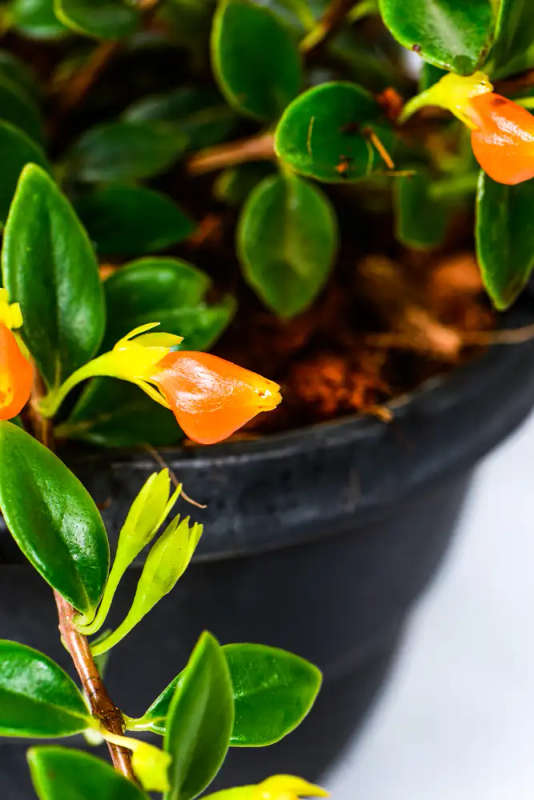










Goldfish plant
Check my rate
| Main centres: | 1-3 business days |
| Regional areas: | 3-4 business days |
| Remote areas: | 3-5 business days |











| Main centres: | 1-3 business days |
| Regional areas: | 3-4 business days |
| Remote areas: | 3-5 business days |
The Goldfish Plant is a real charmer. Its trailing stems are covered in glossy, dark green leavesand when it's in bloom, you'll spot quirky little orange flowers that look just like leaping goldfish. It's fun, different, and surprisingly easy to care for, especially if you've got a sunny windowsill or a bright room. Whether in a hanging pot or trailing over a shelf, this one's guaranteed to turn heads.
Commonly known as: Goldfish Plant
Botanical name: Nematanthus Gregarius
Nematanthus Gregarius more commonly known as the Goldfish Plant, is a tropical trailing plant known for its thick, shiny foliage and eye-catching flowers. The blooms are small and tube-shaped, often bright orange or red, and they really do look like tiny goldfish darting along the stems. It's a rewarding plant that flowers generously when happyand it brings a playful, cheerful energy into any space.
Native to Central and South America, the Goldfish Plant is ideal for hanging baskets, plant stands, or any spot where its stems can trail and shine. It prefers a bit of extra care when it comes to light and humidity, but once settled, it's a reliable performer with long flowering cycles.
Light requirements:
Needs bright, indirect light to thrive. A few hours of soft morning sun is great, but avoid harsh midday rays which can scorch the leaves. Too little light will result in weak growth and fewer flowers.
💧 Watering:
Water when the top 23 cm of soil feels dry. Keep the soil lightly moist during the warmer months, but let it dry out more between waterings in winter. Avoid overwateringthis plant is prone to root rot if left soggy.
🌡 Humidity & Temperature:
Goldfish Plants prefer a bit more humidity. Bathrooms, kitchens, or spaces with a pebble tray or humidifier will help. Aim for temperatures between 1826°C and keep it away from cold draughts.
🪴 Potting mix:
Use a light, well-draining mix. For optimal drainage and healthy roots, you can use our premixed Aroid Mix, or you can create your own potting mix using Barks Unlimited Potting Soil combined with Perlite and Bark Chips. Repot in spring only when necessary.
🌱 Feeding:
Feed every 34 weeks during spring and summer with a controlled release fertiliser or organic fertiliser. Cut back during autumn and skip feeding in winter.
🐛 Pests & Problems:
Aphids and mealybugs can sometimes show up, especially when the plant is stressed or flowering. Wipe down the stems and treat with an insecticidal spray if needed. Ensure good airflow to prevent mildew.
Pruning & propagation:
Trim leggy growth to keep the plant full and encourage branching. You can easily propagate from stem cuttingsjust pop them into water or directly into a moist mix and keep them warm until rooted.
Be sure to visit and follow our page.
